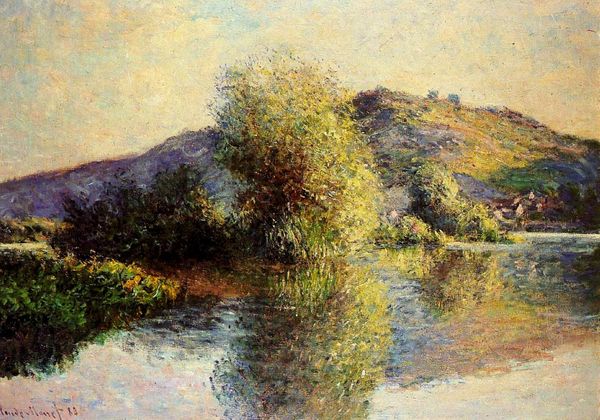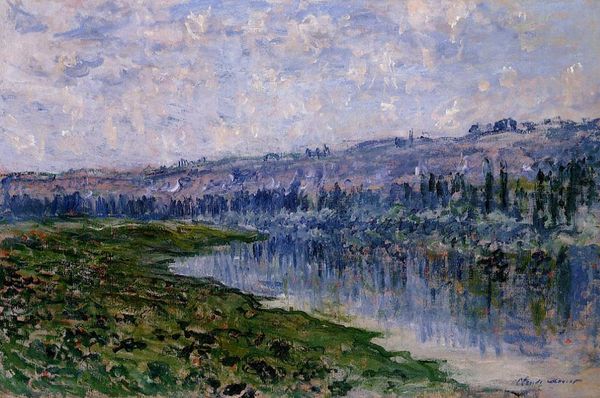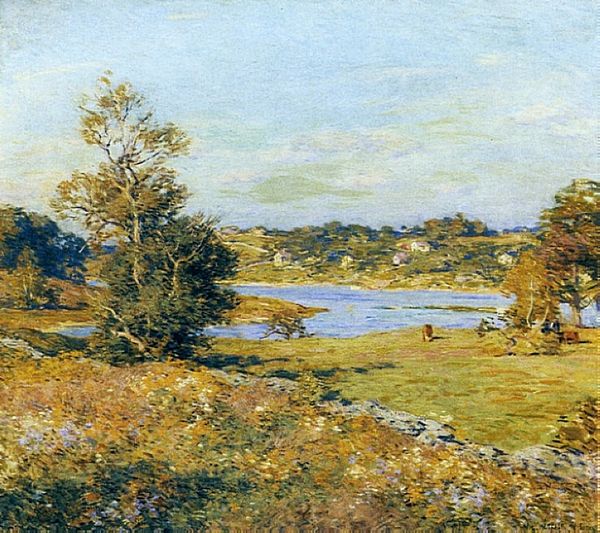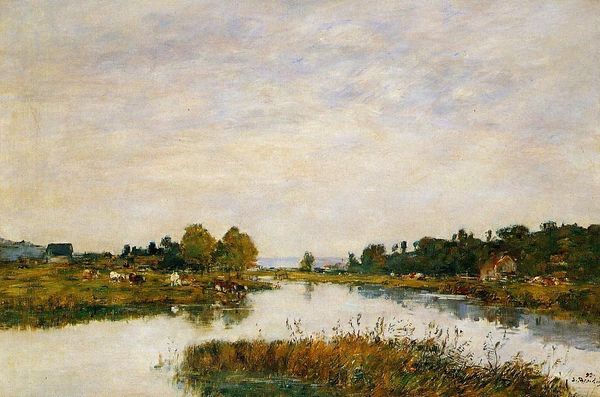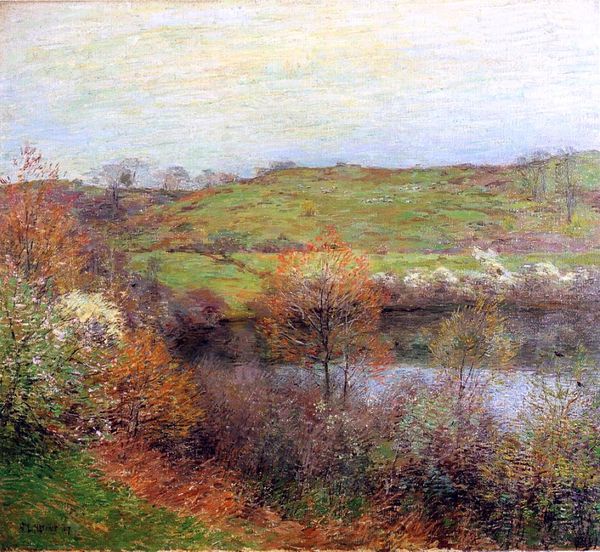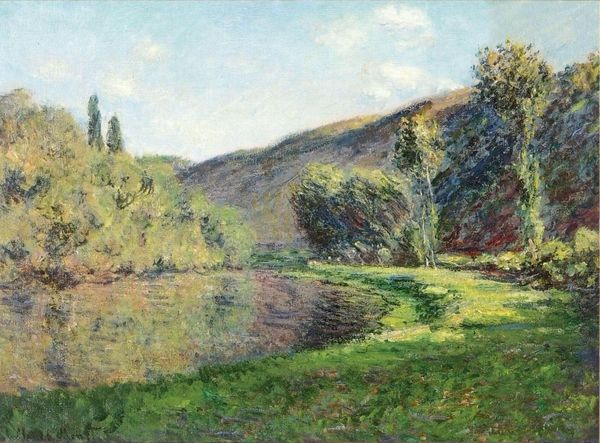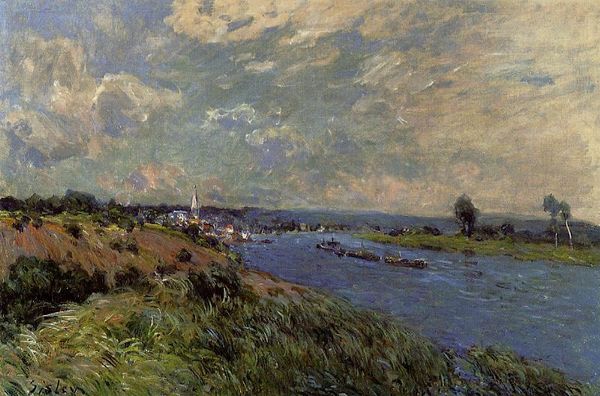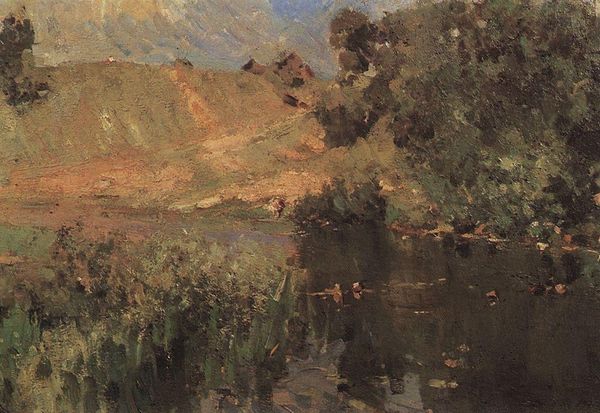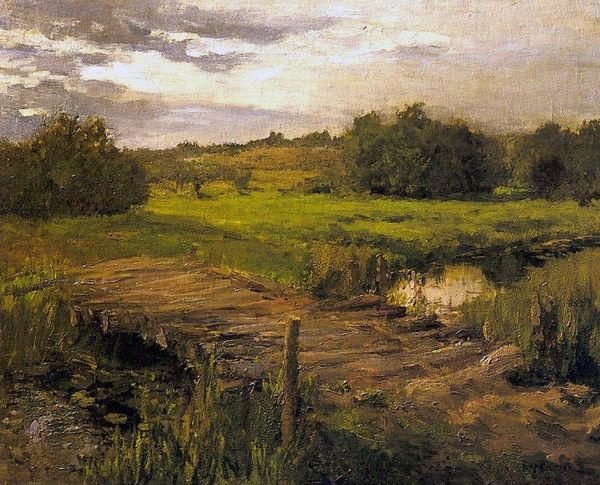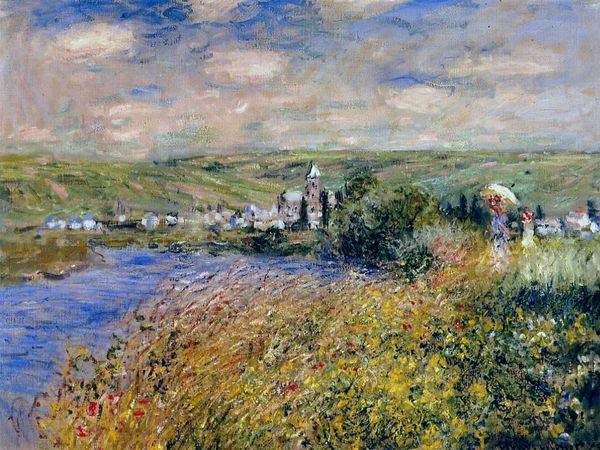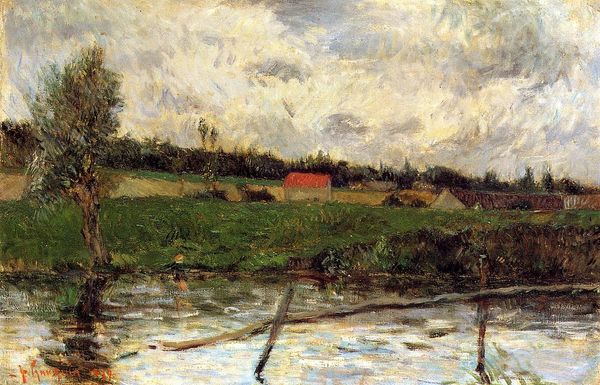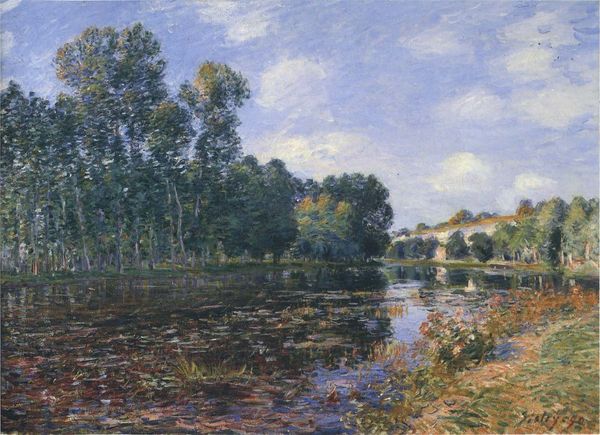
Copyright: Public domain
Curator: The serene and melancholic atmosphere hits you right away, doesn't it? The soft, diffused light gives everything a dreamlike quality. Editor: Absolutely. We’re looking at Claude Monet’s "The Valley of the Scie at Pouville," painted in 1882. Monet, of course, was deeply interested in representing the fleeting effects of light and atmosphere. Curator: What I find striking is how Monet uses oil paint to almost mimic watercolor. The thin washes and delicate brushstrokes create a sense of transparency, especially in the sky and water. It is, indeed, almost watercolor, achieving an open air-esque feel. How would that be possible at the time? Editor: That effect is key. Monet, like many Impressionists, embraced plein-air painting. This approach required specific materials, portable easels, and the innovation of paint tubes to allow them to efficiently transport materials and work outdoors. It all played into the new speed required for his visual capture of a fleeting moment. Curator: It really captures a certain industrial change. It's not just a pretty landscape; there's evidence of human labor. I see fields, pastures with what appears to be livestock... it hints at the region's agricultural and economic structure. Editor: A fitting connection! And consider the compositional structure too. The horizon line is set rather high, emphasizing the sky. Notice how the horizontal brushstrokes lead our eye across the landscape, from the water to the fields and finally the distant hills. I’d even go far as to say it’s very calculated. Curator: Absolutely. And how these open air artists became somewhat industrial figures in and of themselves by taking on those attributes too. Editor: Well, it has been such a treat to unpack and delve into its nuances! Curator: Indeed. It's an excellent demonstration of how material considerations and formal elements can come together to convey not just the visual appearance of a place, but the reality of a moment and mode of working too.
Comments
No comments
Be the first to comment and join the conversation on the ultimate creative platform.
